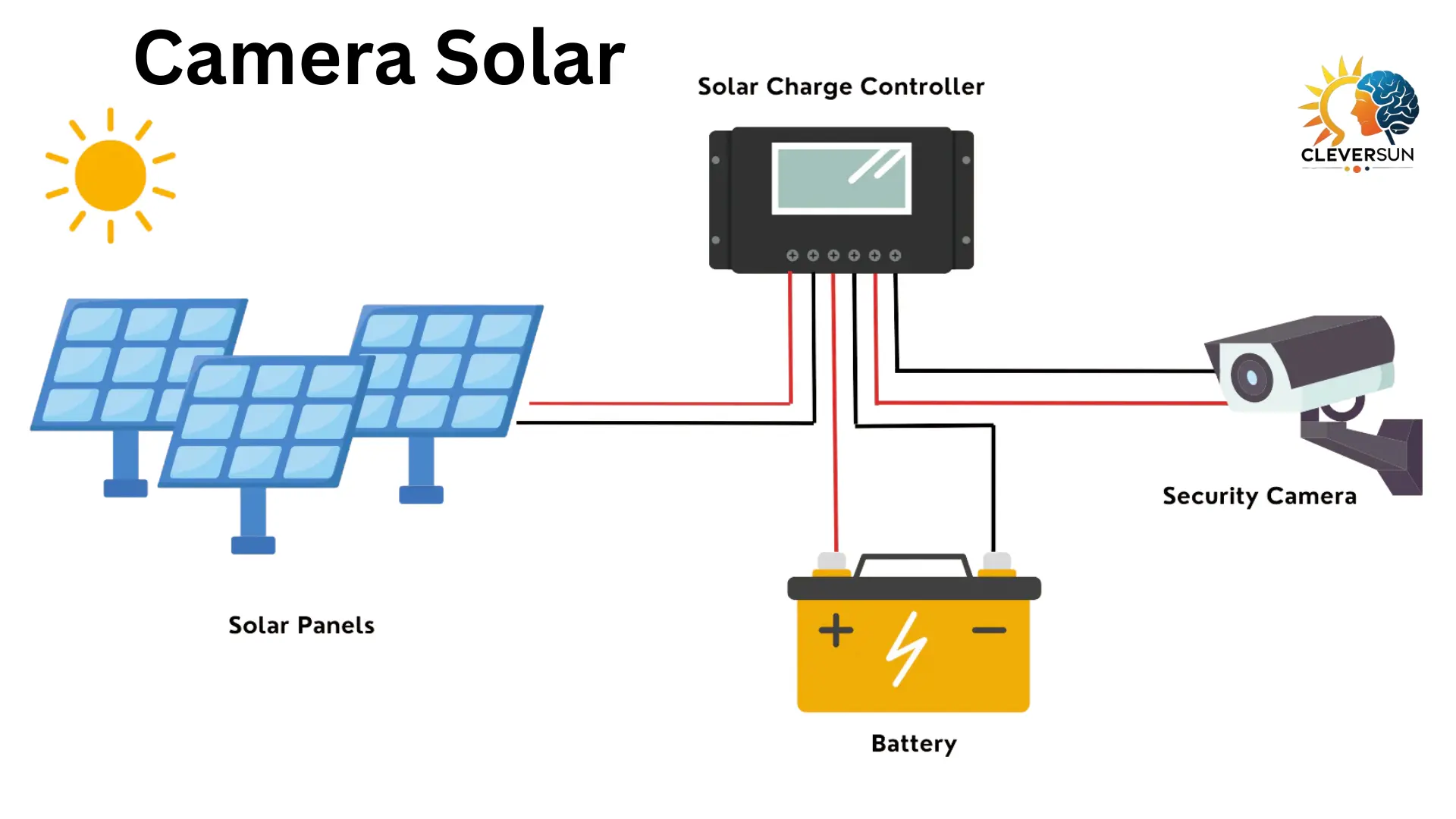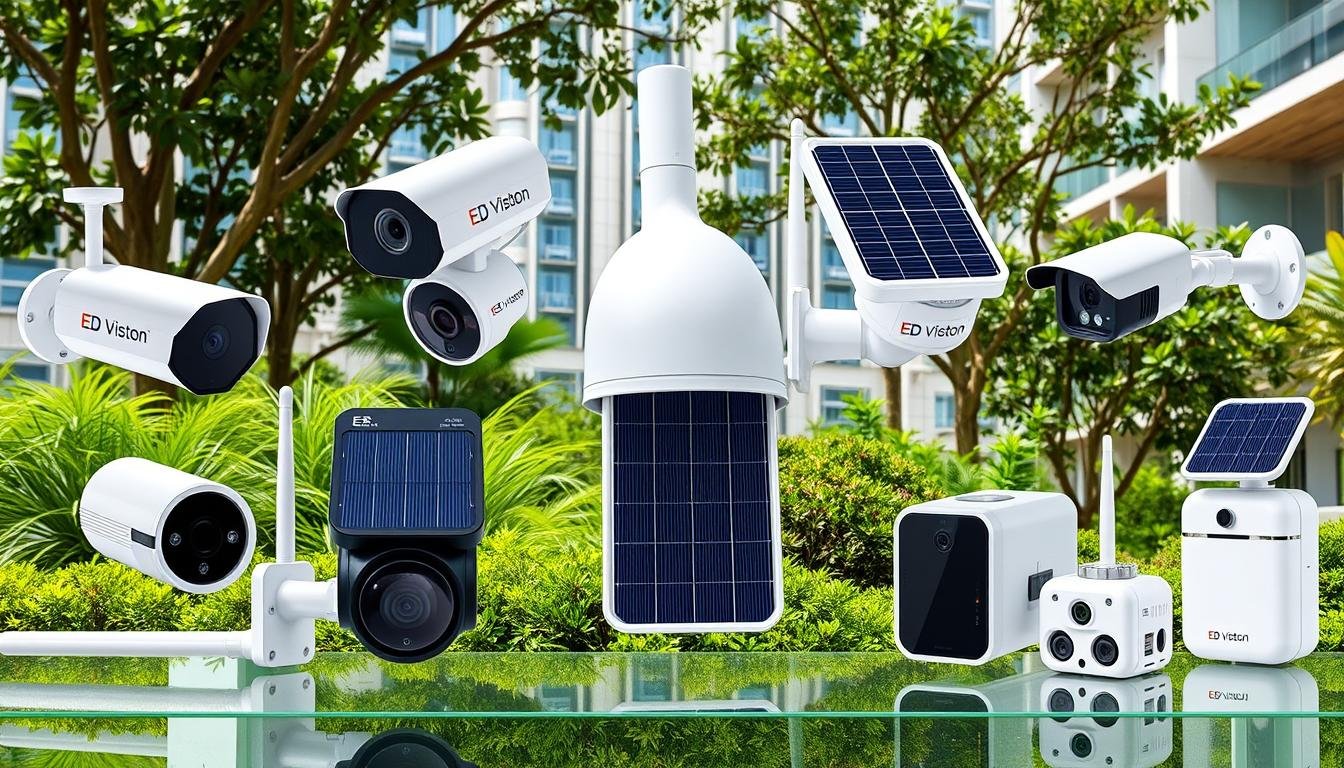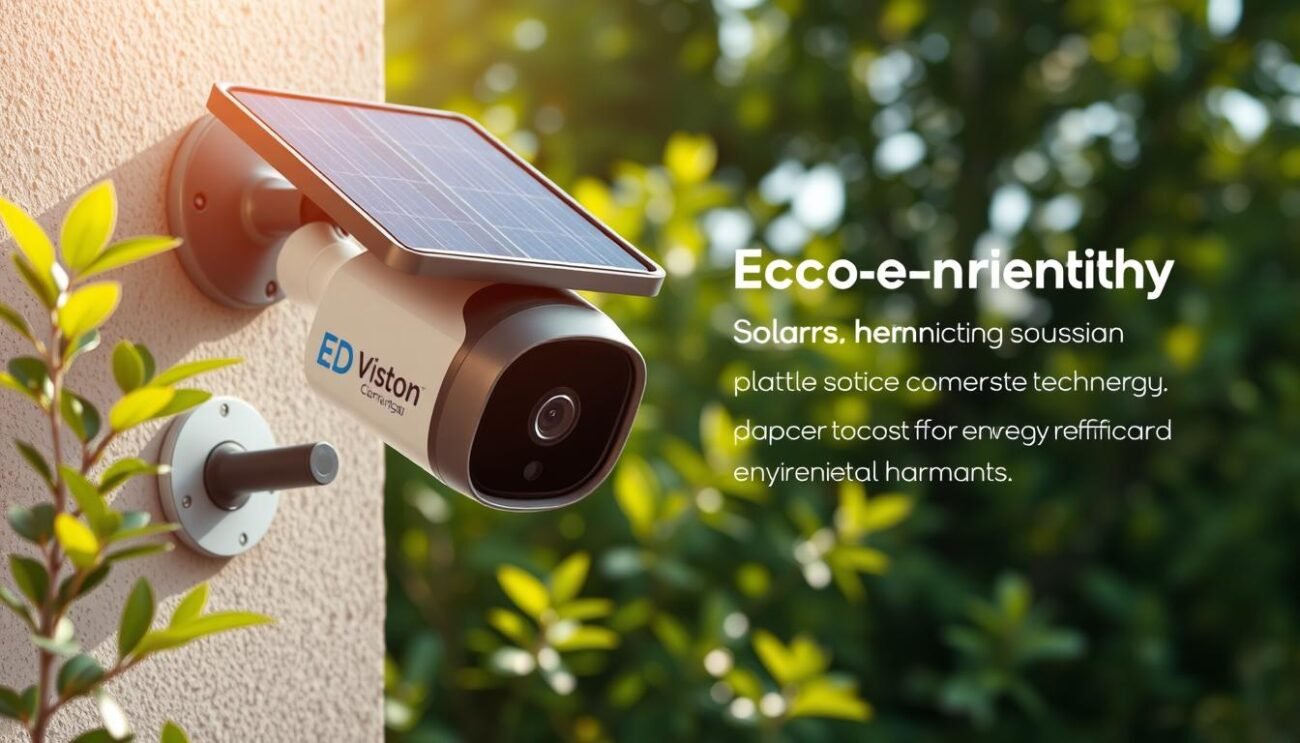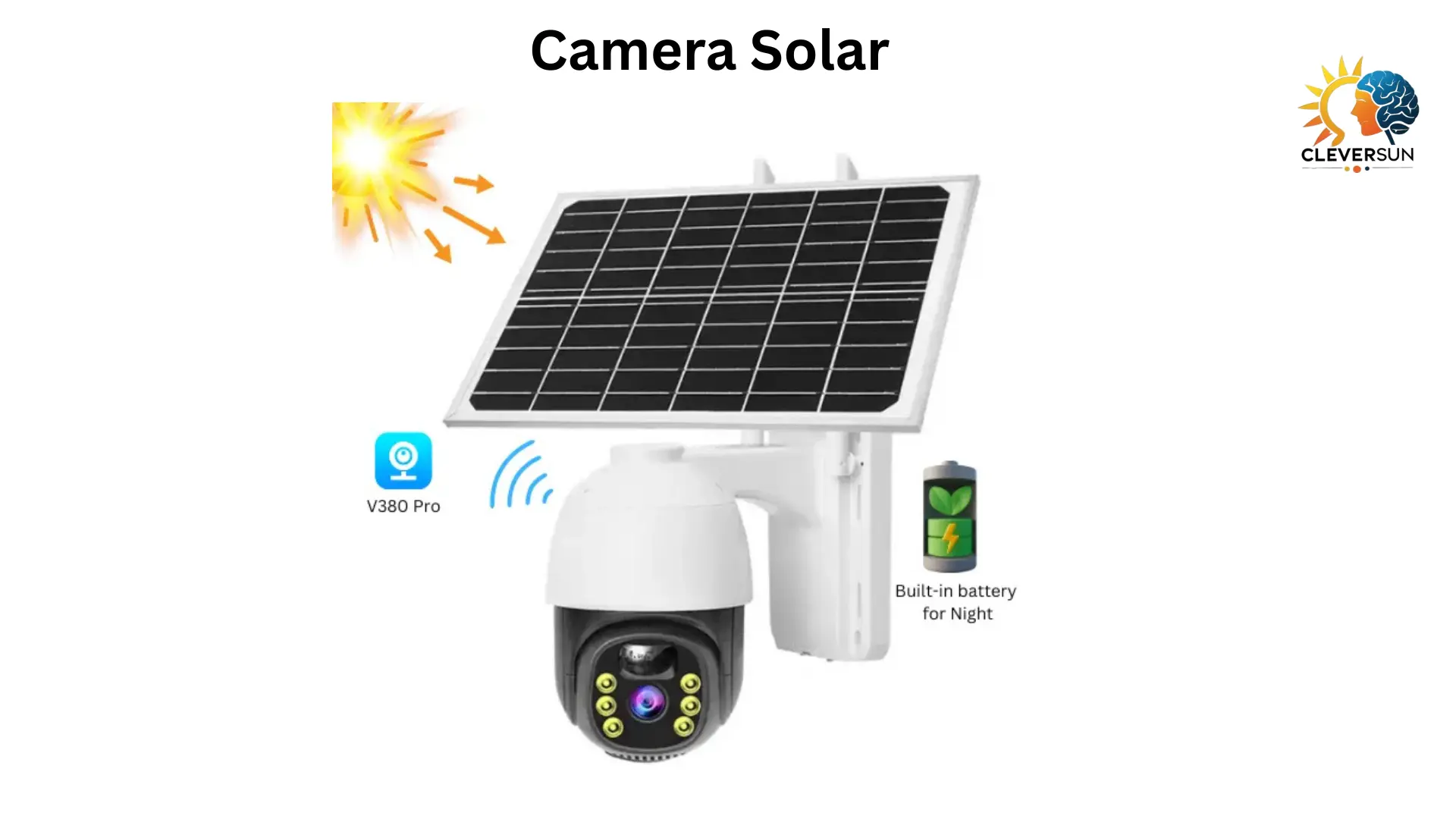Camera Solar
Introduction
A camera solar is a type of security camera that uses solar energy to work. It has a solar panel that collects sunlight and turns it into electricity. The electricity is stored in a rechargeable battery. This stored power allows the camera to work both during the day and at night.
These cameras are becoming more popular for homes, offices, farms, and outdoor spaces. They are an ideal choice for people who want security without depending on the main electricity supply. Because they use sunlight, they are eco-friendly and help reduce electricity bills.
A solar camera can work in places where traditional cameras cannot be installed. For example, you can use them in rural areas, on farms, or at construction sites where there is no power supply. They are easy to set up and require less maintenance than wired cameras.
How a Solar Camera Works

A solar camera has three main components:
-
The Camera – records video and captures images.
-
The Solar Panel – collects sunlight and converts it into electricity.
-
The Battery – stores the electricity for later use.
During the day, the solar panel collects energy from the sun. Even on cloudy days, it can still collect some energy. This energy is stored in the battery, which powers the camera during the night or when the sun is not shining.
Most solar cameras use wireless technology. They connect to Wi-Fi, allowing you to view live video through a mobile app or computer. Some models use 4G or 5G networks for remote locations without internet service.
Many solar cameras also come with motion sensors. When movement is detected, the camera starts recording and can send an alert to your smartphone. This feature helps save battery power because the camera does not record continuously unless needed.
Benefits of Using a Solar Camera
No Electrical Wiring
Solar cameras do not require electric wiring. This makes them easy to install in almost any location. You can place them far from the main building or in hard-to-reach areas.
Works in Remote Locations
Because they run on solar power, these cameras can work in rural areas, forests, parking lots, or construction sites. They are perfect for places with no access to electricity.
Saves Money
Once installed, a solar camera does not add to your electricity bill. The sun provides free energy, which makes them cost-effective in the long term.
Eco-Friendly
Solar cameras use renewable energy. This helps reduce carbon emissions and supports environmental protection.
Low Maintenance
These cameras are designed to last for years. You only need to clean the solar panel and check the battery from time to time.
Reliable During Power Cuts
Even when there is a power outage, a solar camera will continue working as long as the battery is charged.
Easy Relocation
Because there are no wires, you can move the camera to a different location easily when needed.
Types of Solar Cameras

Solar CCTV Cameras
These cameras are used for large-scale security. They have powerful zoom, long recording time, and high-resolution video. They are often used in cities, factories, and government buildings.
Wireless Solar Security Cameras
These are popular for home and small business use. They connect to Wi-Fi and can be controlled through a mobile application. They are easy to install and manage.
4G or 5G Solar Cameras
These cameras use mobile networks instead of Wi-Fi. They are ideal for remote areas where internet service is not available. Farmers, wildlife researchers, and construction managers often use them.
Portable Solar Cameras
These are lightweight and easy to carry. They are used for temporary needs like camping, hiking, or monitoring events.
How to Choose the Best Solar Camera
Battery Capacity
A large battery stores more energy. This helps the camera work longer during cloudy days or at night.
Video Quality
Choose a camera with at least 1080p Full HD resolution. For sharper images, 2K or 4K is better. Higher resolution provides better clarity for identifying people or objects.
Night Vision
Good night vision is important for security. Infrared night vision works in complete darkness, while color night vision provides clearer detail.
Motion Detection
Motion detection saves storage and battery life. Some advanced cameras can tell the difference between people, animals, and vehicles.
Storage Options
You can store footage in the cloud or on a microSD card. Cloud storage allows you to access recordings from anywhere. Local storage is useful for areas with slow internet.
Weather Resistance
For outdoor use, the camera should have an IP65 or IP66 rating. This means it can handle rain, dust, and extreme temperatures.
Brand and Warranty
A trusted brand offers better quality and customer support. A warranty ensures your investment is protected.
Installation Tips
Place the Solar Panel in Direct Sunlight
The solar panel must get several hours of sunlight each day. Avoid locations with heavy shade from trees or buildings.
Mount the Camera at the Correct Height
For home security, mount the camera at 8–10 feet high. This prevents tampering and gives a wide viewing angle.
Check Network Signal
For Wi-Fi cameras, make sure the signal is strong in the installation area. For 4G/5G models, ensure the SIM card is active and has coverage.
Test Before Final Installation
Before fixing the camera permanently, test the video quality, motion detection, and network connection.
Maintenance and Care

Clean the Solar Panel
Dust, dirt, and bird droppings can reduce sunlight absorption. Clean the panel with a soft, damp cloth regularly.
Check the Battery
Batteries lose capacity over time. Check performance every few months and replace the battery if it no longer holds enough charge.
Update Software
Manufacturers release updates to improve performance and security. Keep your camera firmware up to date.
Inspect Mounts and Fittings
Strong winds or heavy rain can loosen mounts. Check and tighten them if needed.
Extra Features to Consider
Two-Way Audio
This feature allows you to speak through the camera using your phone. It is useful for warning intruders or talking to visitors.
Solar Panel Size
A larger panel collects more energy, which is useful in areas with less sunlight.
Pan, Tilt, and Zoom (PTZ)
PTZ cameras can rotate and zoom in on objects. They are useful for covering wide areas.
AI Detection
Some cameras use artificial intelligence to detect humans more accurately and reduce false alerts.
Continuous Recording
While many solar cameras record only when motion is detected, some offer continuous recording for maximum security.
Conclusion
A camera solar is a smart choice for modern security needs. It offers the benefits of wireless installation, low maintenance, and energy savings. Whether you live in the city or a remote area, there is a solar camera suitable for you.
By understanding how solar cameras work, their benefits, and how to choose the right one, you can make an informed decision. With the right installation and maintenance, a solar-powered camera can give you reliable protection for many years while supporting a cleaner and greener planet.

